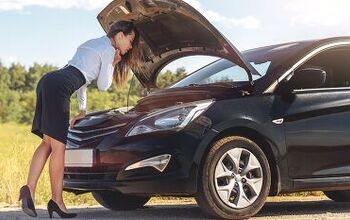How Does Car Insurance Work?
There are no shortage of great mysteries in this life. What happened to that lucky pair of socks? Why did a butterfly flapping its wings in Borneo cause fuel prices to rise? And where did I leave my phone, anyway?
Good queries, all – and most are ones to which we will never know an answer, especially the latter. One other question most gearheads have rattling around their gas tank of a brain commonly revolves around car insurance. Beyond the conundrum of why a person is paying for something they hope to never use, some folks are simply (and understandably) flummoxed about how the stuff works at all.
AutoGuide.com thanks Toyota Insurance for sponsoring this insurance series
For starters, an insurance policy is likely to cover repairs to a vehicle which is involved in a crash. It depends on the particular insurance policy and the amount of coverage it provides, but a knowledgeable company like Toyota Insurance can help set drivers up with a situation that can indeed repair a car after calamity. What an insurance policy emphatically will not cover are basic repairs to wear items such as brakes or suspension components.
For example, worn out brake pads or a dead battery are the responsibility of the owner and should spawn conversations with your trusted mechanic, not the insurance company. Additionally, if one were to get in a crash because of worn out brake pads (or some other part you let go past its expiry date), that could lead to issues with your insurer that you don’t want. Maintain your car folks!
Some insurance customers wonder if their policy covers a stolen car, a very pertinent question given the epidemic of vehicle theft in certain parts of this country. Ray Blackburn, a product manager at Toyota Insurance and team lead of a crew which has a wealth of knowledge about the industry, gives us the lowdown about such a scenario.
“Assuming that the car was truly stolen, there is usually no liability on the part of a vehicle owner when the thief causes an accident,” Blackburn explains. This is helpful to know. But, and this is a big caveat, it is key to realize there are numerous details which could toss that evaluation out the window. One example would be if the car was stolen because its keys were left in plain view or in the ignition. There can also be uncomfortable questions if family member or acquaintance took the car without permission or if an owner negligently trusted the car to a person who had no business driving it in the first place. “Each case is different and may require the assistance of an attorney to unlock the details,” explains Blackburn.
Another common distinction mulled about by people unfamiliar with car insurance is if the policy covers the car or driver. After all, it isn’t uncommon to borrow someone else’s vehicle in a pinch or get loan of a buddy’s pickup truck for moving day. But what happens in case of a crash in such a scenario? “This is again difficult to answer definitively,” Blackburn says. “But in the vast majority of cases, the insurance follows the vehicle, not the driver.”
Using a fictional example in which one person has a valid policy on their Toyota Corolla but get into an incident whilst driving a friend's 4Runner on which they have a valid policy, Blackburn advises the 4Runner’s policy would be primary and the Corolla’s insurance coverage would be secondary. “Your own policy could come into play if [the other] policy limits are insufficient to cover all damages caused in the accident,” he elaborated. In other words, it will be of great peace of mind to make sure you’re in good standing with your insurance company before wheeling someone else’s ride.
More by AutoGuide.com Staff

































Comments
Join the conversation
Not sure If this is the proper time to discuss. In Ireland, the auto insurance companies compete for your business. You put out your information one time, and they all give you quotes on insurance. This should be done on everything auto, home, and life insurance.